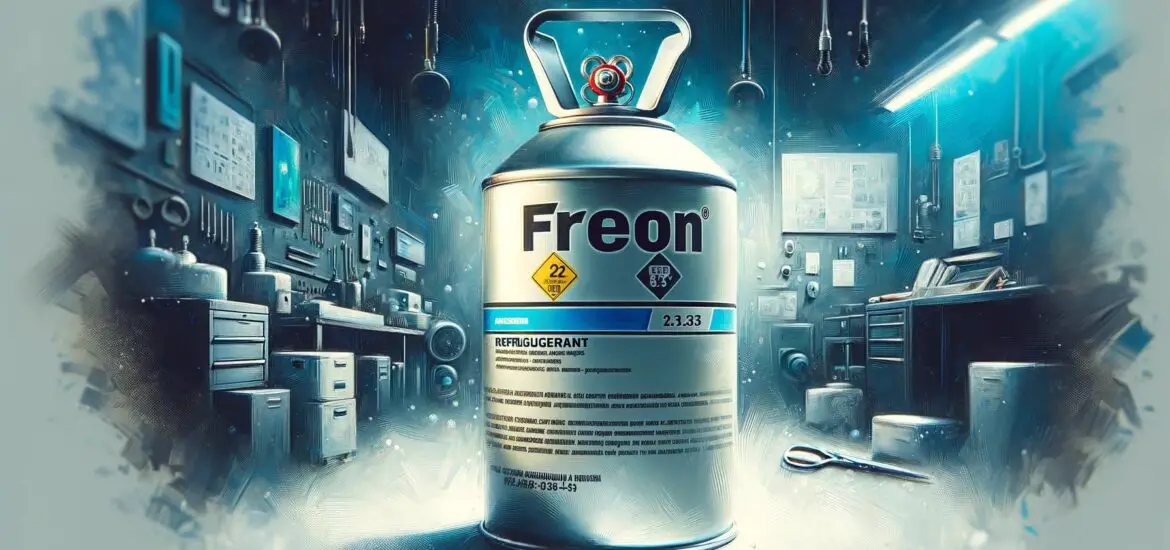This article delves deeper into how Freon works, aiming to provide a thorough yet accessible understanding of its role in cooling technologies.

Table of Contents
The Role of Freon in Cooling Systems
Freon serves as a refrigerant, a substance essential for the heat transfer process in cooling systems. It’s particularly effective due to its unique properties. This allows it to transition between liquid and gaseous states at temperatures convenient for household and industrial cooling systems.
In air conditioners, Freon absorbs indoor heat and releases it outside. In refrigerators, it removes heat from the interior, keeping it cool. This process of absorbing and releasing heat is key to maintaining desired temperatures in various environments.
The Science Behind How Freon Works
The effectiveness of Freon in cooling systems hinges on its ability to undergo phase changes – from gas to liquid and vice versa. This process is governed by thermodynamics.
When Freon gas is compressed in a compressor, it heats up and becomes a high-pressure gas. This hot gas then flows through condenser coils, where it cools and transforms into a high-pressure liquid.
This phase change from gas to liquid is crucial because it releases a significant amount of heat. The released heat is then expelled outdoors in air conditioners.
After exiting the condenser, the high-pressure liquid Freon moves through an expansion valve. It then experiences a sudden drop in pressure. This drop causes the liquid to expand and evaporate into a cold, low-pressure gas, which then enters the evaporator coils.
Inside these coils, the cold Freon gas absorbs heat from the environment, such as the air inside a room or the interior of a refrigerator. This heat absorption further cools the surroundings and causes the Freon to revert to its gaseous state. As a result, it completes its cycle back to the compressor.
The Complete Cycle of Freon in a Cooling System
The cycle of Freon in a cooling system is a closed-loop process that involves four key stages: compression, condensation, expansion, and evaporation. The cycle begins in the compressor, where Freon gas is compressed, increasing its pressure and temperature.
The hot, high-pressure gas then travels to the condenser, where it releases its heat to the outside air and condenses into a liquid. This liquid Freon, still under high pressure, is pushed through an expansion valve. It then undergoes a rapid pressure drop.
This pressure reduction causes the liquid to cool sharply and partially evaporate, forming a cold, low-pressure mixture of liquid and gas. This mixture enters the evaporator, where it absorbs heat from the air in the room or the interior of a fridge, fully evaporating into a gas and cooling the surrounding area. This warm, low-pressure gas is then sucked back into the compressor, and the cycle repeats.
Maintenance and Safety Concerns with Freon
Proper maintenance of Freon-based systems is essential for their efficient and safe operation. Key maintenance tasks include checking for Freon leaks, ensuring correct Freon levels, and regularly cleaning system components. This includes the compressor, evaporator, and condenser coils.
Safety is also a significant concern with Freon. Direct exposure to Freon, particularly in its liquid form, can cause skin and eye irritation, and inhalation of high concentrations can lead to serious health issues.
In addition, Freon’s environmental impact, particularly its older variants that contribute to ozone layer depletion, has led to strict regulations and the development of more eco-friendly refrigerants. Safe handling and proper disposal of Freon are crucial to minimize its environmental impact.